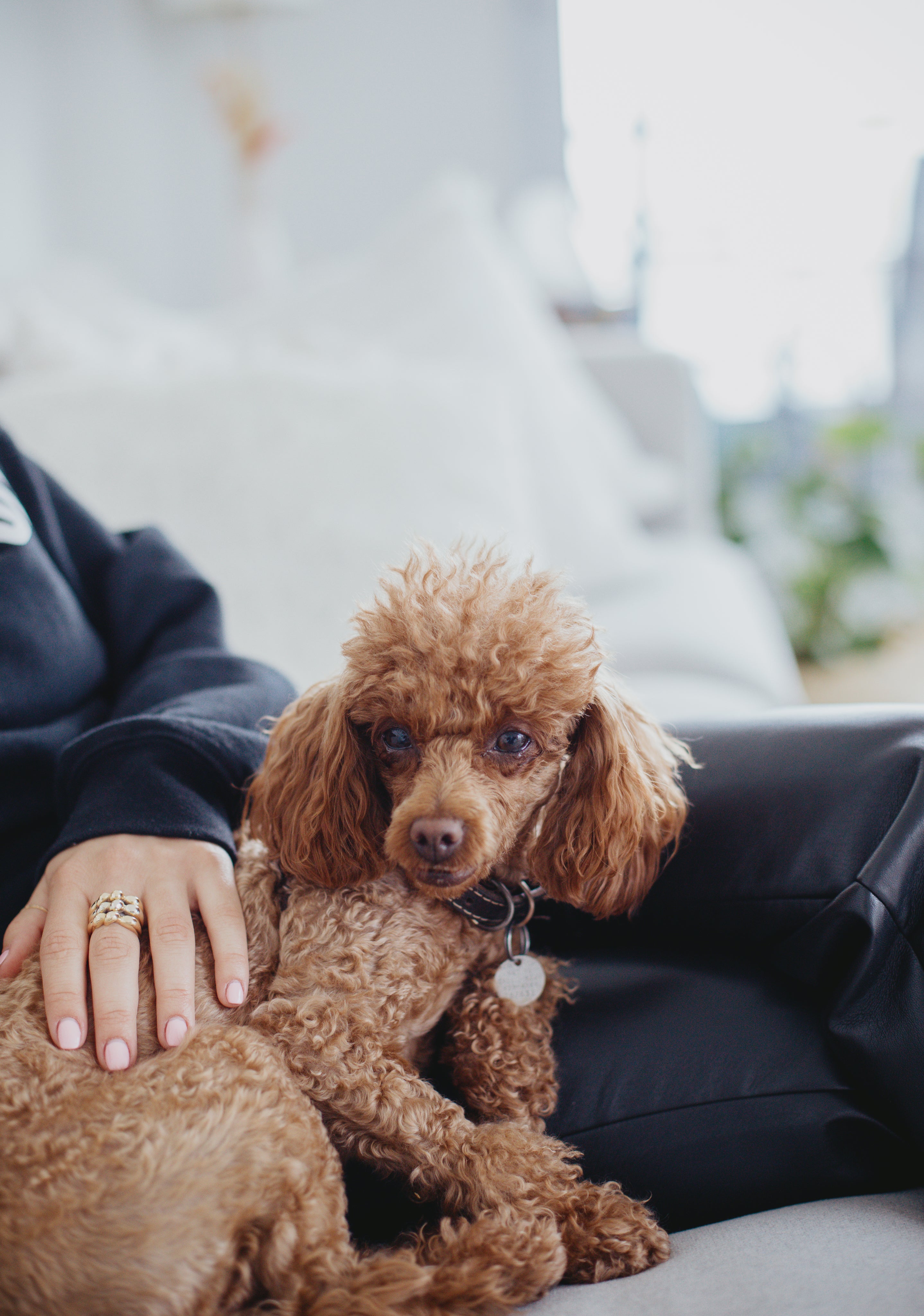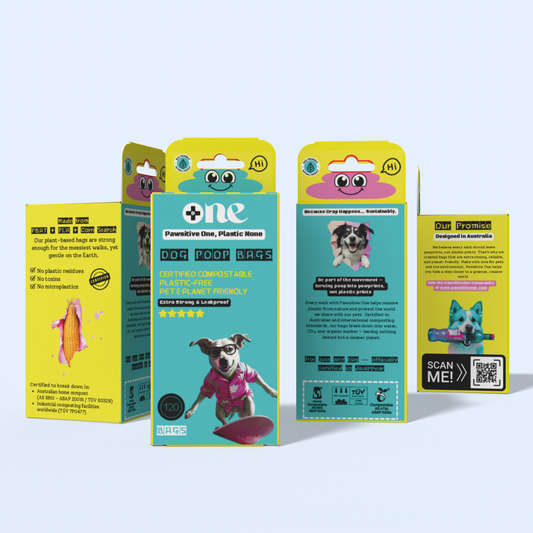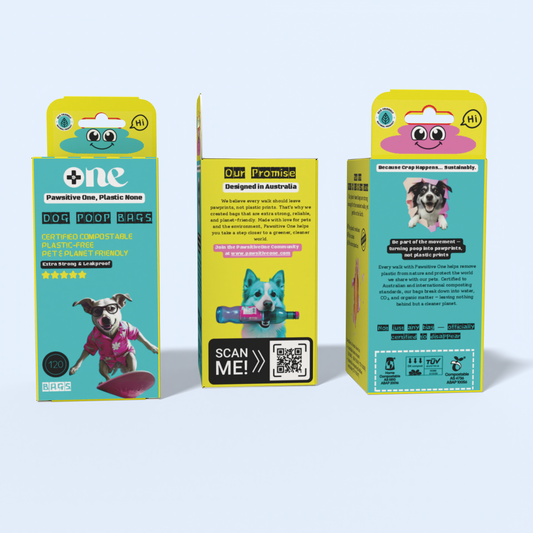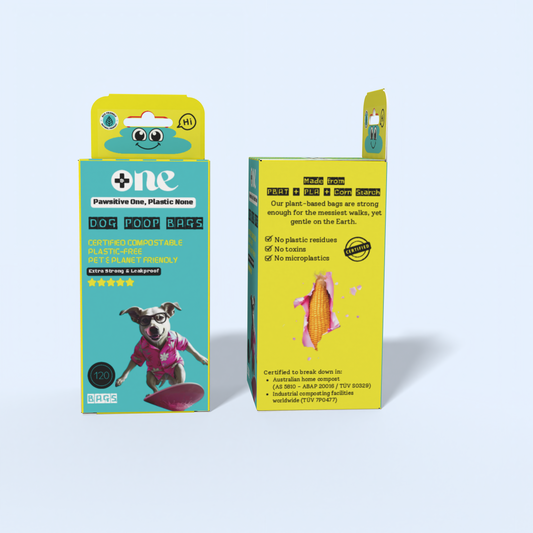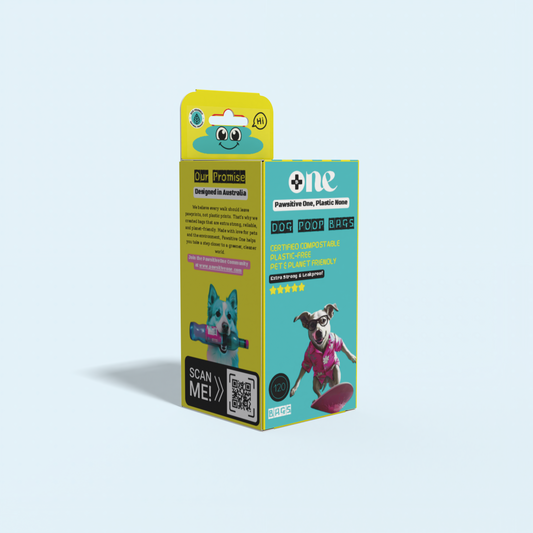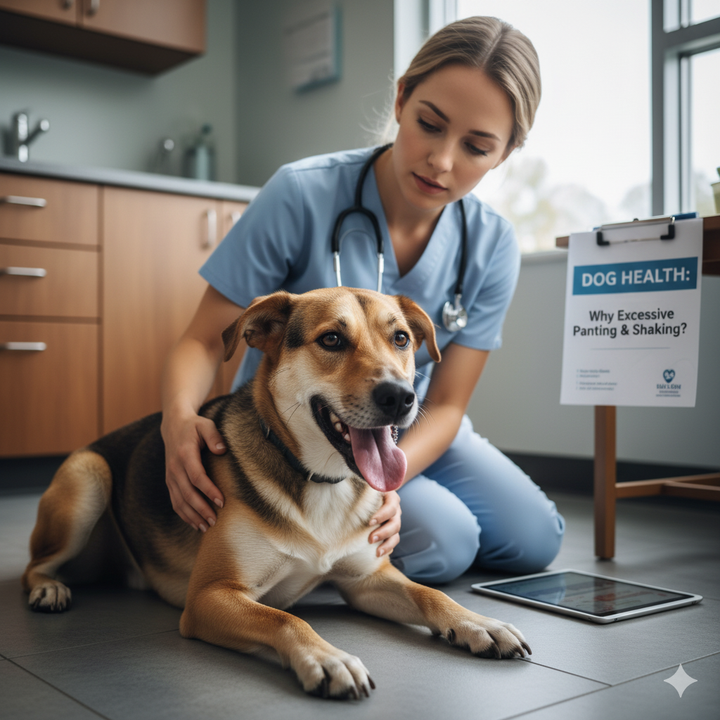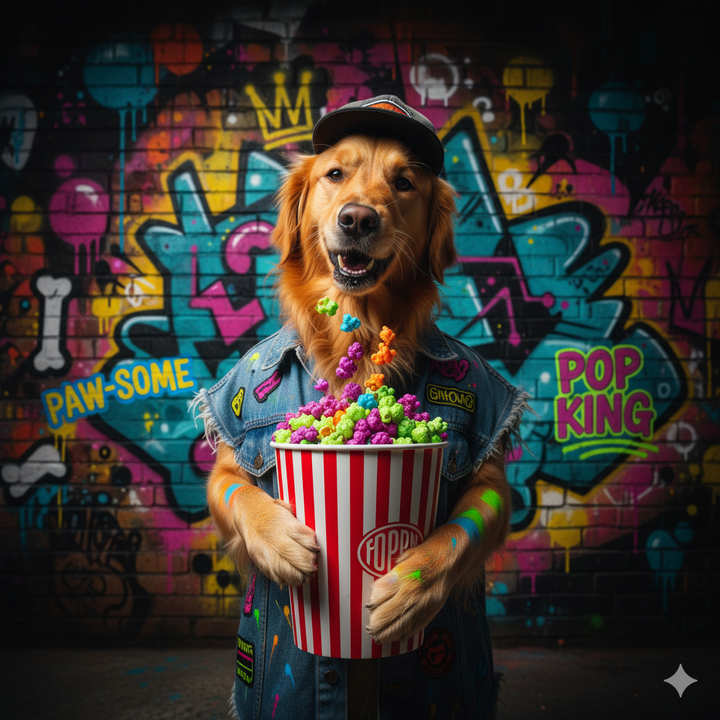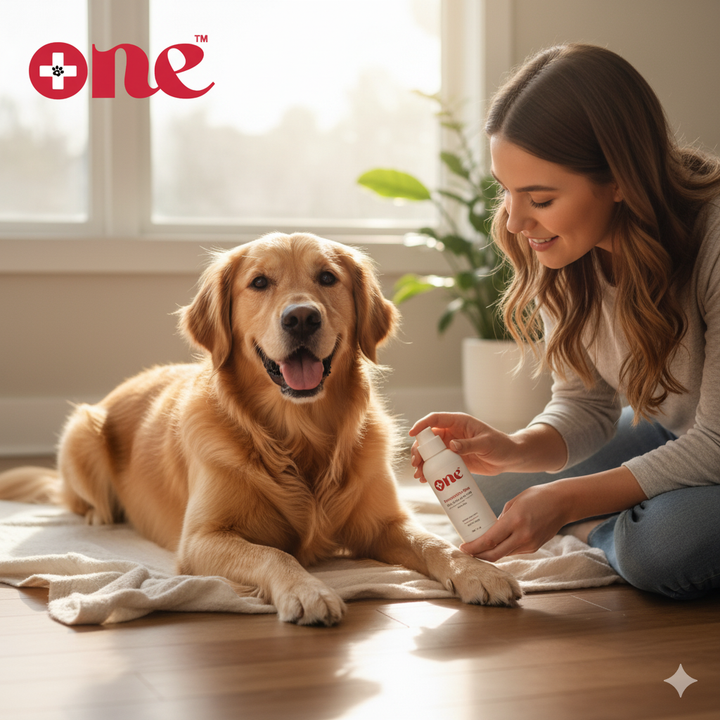Dangerous Dog Poop Colors | PawsitiveOne
Beyond Brown: Dangerous Dog Poop Colors You Shouldn't Ignore
We've talked about what healthy dog poop looks like, and we've highlighted the urgency of black, tarry stools. But your dog's daily deposit can come in a surprising array of colours, and some of them are definite red (or green, or white, or grey!) flags that shouldn't be overlooked.
As an Australian pet owner committed to your dog's well-being, knowing which colours signal a trip to the vet is just as important as knowing how to scoop responsibly with your Pawsitive One compostable bags.
Let's dive into the dangerous dog poop colours and what they might mean for your furry friend's health.

When Poo Isn't Just Poo: The Concerning Color Palette
While a healthy dog's stool is typically chocolate brown, any significant departure from this norm warrants close attention. Here are the dangerous dog poop colours and what they could indicate:
1. Red or Streaks of Red
-
Appearance: Bright red streaks, clots, or liquid mixed with stool.
-
What it means: This is usually fresh blood, indicating bleeding in the lower gastrointestinal (GI) tract – the colon or rectum.
-
Potential Causes: Colitis (inflammation of the colon), anal gland issues, rectal injury from straining, polyps, or sometimes parasites.
-
Action: While not always a dire emergency like black tarry stool, significant or persistent fresh blood always warrants a vet visit. If your dog is also straining, lethargic, or in pain, see your vet promptly.
2. Black and Tarry (Melena)
-
Appearance: Dark, sticky, tar-like, often with a very foul odour.
-
What it means: Digested blood, signifying bleeding in the upper GI tract (oesophagus, stomach, small intestine).
-
Potential Causes: Stomach ulcers (often from NSAID medications), bleeding disorders, severe inflammation, foreign body ingestion, or tumours.
-
Action: This is an urgent veterinary emergency. Contact your vet immediately or head to an emergency clinic.
3. White or Greyish-White (Chalky)
-
Appearance: Very pale, almost white, or chalky in texture.
-
What it means: This often suggests a lack of bile, which is produced by the liver and stored in the gallbladder, and helps with fat digestion and gives stool its brown colour. It can also indicate too much calcium.
-
Potential Causes: Liver disease, gallbladder issues (like a blocked bile duct), or exocrine pancreatic insufficiency (EPI). If chalky, it could be due to an overly bony diet or calcium supplementation.
-
Action: Consult your vet promptly. Liver and gallbladder issues are serious and require diagnosis and treatment.
4. Green
-
Appearance: Bright green or dark green stool.
-
What it means: Can indicate a few things:
-
Eating too much grass: Common and often harmless.
-
Rapid transit time: Food moving too quickly through the digestive system, not allowing bile to be properly reabsorbed and broken down.
-
Gallbladder issues: An excess of bile in the stool.
-
-
Potential Causes: Dietary indiscretion (eating something unusual), mild stomach upset, parasites, or, less commonly, liver/gallbladder problems.
-
Action: If it's a one-off and your dog is otherwise normal, monitor them. If green stool persists, is accompanied by vomiting, lethargy, or diarrhoea, contact your vet.
5. Yellow or Orange
-
Appearance: Yellowish or orangey, often loose or greasy.
-
What it means: Similar to green, it can suggest fast intestinal transit (food moving too quickly), not allowing bile to properly process. It can also indicate issues with the liver, gallbladder, or pancreas.
-
Potential Causes: Dietary upset, certain food dyes, parasites, or more serious issues like liver disease, pancreatic inflammation, or gallbladder problems.
-
Action: If it's a one-off, monitor. If it's persistent, very bright, or accompanied by other symptoms like vomiting or lethargy, contact your vet.
The Takeaway: When in Doubt, Check it Out!
Your dog's stool is a powerful diagnostic tool. While it's easy to dismiss a subtle change, paying attention to these colour shifts can help you catch serious health issues early.
Always remember: if you see black, tarry stool, or if any unusual colour change is persistent, severe, or accompanied by other worrying symptoms (vomiting, lethargy, loss of appetite, pain, straining), do not hesitate to contact your veterinarian immediately.
And as you monitor your dog's health, keep scooping responsibly with Pawsitive One's compostable dog poop bags – a small act that makes a big difference for our beautiful Australian environment.







